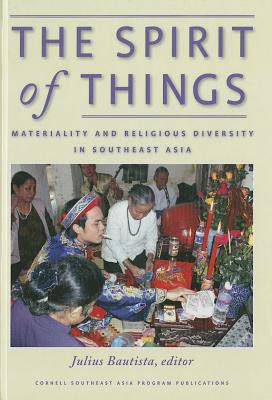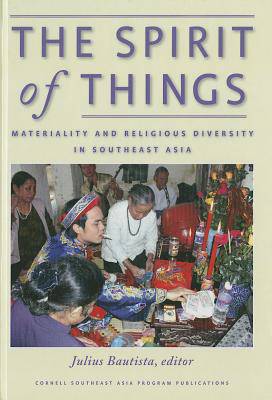
- Retrait gratuit dans votre magasin Club
- 7.000.000 titres dans notre catalogue
- Payer en toute sécurité
- Toujours un magasin près de chez vous
- Retrait gratuit dans votre magasin Club
- 7.000.0000 titres dans notre catalogue
- Payer en toute sécurité
- Toujours un magasin près de chez vous
The Spirit of Things
Materiality and Religious Diversity in Southeast Asia
Description
What role do objects play in crafting the religions of Southeast Asia and shaping the experiences of believers? The Spirit of Things explores religious materiality in a region marked by shifting boundaries, multiple beliefs, and trends toward religious exclusivism. While most studies of religion in Southeast Asia focus on doctrines or governmental policy, contributors to this volume recognize that religious "things"--statues, talismans, garments, even sacred automobiles--are crucial to worship, and that they have a broad impact on social cohesion. By engaging with religion in its tangible forms, faith communities reiterate their essential narratives, allegiances, and boundaries, and negotiate their coexistence with competing belief systems. These ethnographic and historical studies of Southeast Asia furnish us with intriguing perspectives on wider debates concerning the challenges of secularization, pluralism, and interfaith interactions around the world.
In this volume, contributors offer rich ethnographic analyses of religious practices in the Philippines, Thailand, Malaysia, Vietnam, Indonesia, and Burma that examine the roles materiality plays in the religious lives of Southeast Asians. These essays demonstrate that religious materials are embedded in a host of practices that enable the faithful to negotiate the often tumultuous experience of living amid other believers. What we see is that the call for plurality, often initiated by government, increases the importance of religious objects, as they are the means by which the distinctiveness of a particular faith is "fenced" in a field of competing religious discourses. This project is called "the spirit of things" to evoke both the "aura" of religious objects and the power of material things to manifest "that which is fundamental" about faith and belief.
Contributors: Julius Bautista, National University of Singapore; Sandra Cate, San Jose State University, California; Margaret Chan, Singapore Management University; Liana Chua, Brunel University, London; Cecilia S. de la Paz, University of the Philippines (Diliman); Alexandra de Mersan, Centre Asie du Sud-Est (Paris) and Institut National des Langues et Civilisations Orientales; Johan Fischer, Roskilde University, Denmark; Janet Hoskins, University of Southern California; Klemens Karlsson, KTH Royal Institute of Technology, Stockholm; Laurel Kendall, American Museum of Natural History and Columbia University, New York City; H. Leedom Lefferts, Drew University and Asian Civilisations Museum, Singapore; Nguyên Thi Thu Huong, Academic Council of the National Museum of History, Hanoi, and Vietnam Museum of Ethnology; Anthony Reid, Australian National University, University of California-Los Angeles, and National University of Singapore; Richard A. Ruth, United States Naval Academy; Kenneth Sillander, University of Helsinki; Vu Thi Thanh Tâm, Vietnam Museum of Ethnology; and Yeoh Seng Guan, Monash University, Malaysia
Spécifications
Parties prenantes
- Editeur:
Contenu
- Nombre de pages :
- 220
- Langue:
- Anglais
- Collection :
Caractéristiques
- EAN:
- 9780877277880
- Date de parution :
- 15-11-12
- Format:
- Livre relié
- Format numérique:
- Genaaid
- Dimensions :
- 180 mm x 254 mm
- Poids :
- 675 g

Les avis
Nous publions uniquement les avis qui respectent les conditions requises. Consultez nos conditions pour les avis.





